How to use the Tram
With convenient stops at some of the region's best destinations, plus friendly and helpful conductors on-board to provide tickets and information, it's easy to get around Sheffield and Rotherham using Supertram.
This page answers just about any question you could have about travelling with us, plus provides helpful information about your journey.
Information on this page:
Planning your journey
Use the Travel South Yorkshire Journey Planner, or find your route by checking the Supertram network map.
How to buy tickets for the tram
You can buy tickets in advance using the TSY Mobile App, or buy from the conductor when you board.
Step-by-step guide to travelling with Supertram
Whether you're a first-time passenger or a regular rider, this guide will help you travel confidently and comfortably on the South Yorkshire Supertram network.
Step 1
Before you set off, it's a good idea to plan your journey. You can do this in a variety of ways, including using our travel tools:
- Online or on mobile: Use the Travel South Yorkshire Journey Planner to find the best route, tram times, and connections. To just look at tram journey options, make sure only 'Tram' is ticked in the 'More options section. The journey planner is also available in the TSY Mobile app.
- Network maps: These show all tram routes and stops. You can find them on our network and routes webpage or at tram stops.
- Ask for help: Staff at Travel South Yorkshire Interchanges are happy to assist, or you can call Traveline for free on 0800 952 0002.
Visit our Tickets and Fares page to check available fares in advance. If you're unsure which ticket you need, don’t worry - you can buy on-board from the conductor, who can help you find the best ticket for your needs.
If your journey involves a bike or car, you can park for free at a Travel South Yorkshire Park and Ride. This is a convenient way to avoid traffic and parking costs, just pay for the cost of your travel.
There are some restrictions to what you can bring on board, such as large items and bikes. Check the details before setting off on your journey.
Step 2
Tram stops are clearly signposted and easy to find from nearby roads and paths.
Be careful of moving trams when at the tram stop or near tram tracks. Always stop and look both ways before crossing tram tracks.
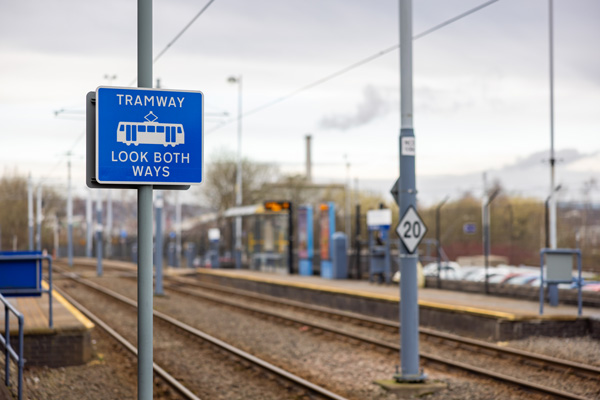
Most platforms have poster cases, which include labels for the platform letter or number. This will tell you which direction each platform serves.
Real-time information screens show when the next tram is due. They display the route, destination, and scheduled departure time for upcoming services. They will also display travel alerts and other information on the bottom line of the screen.
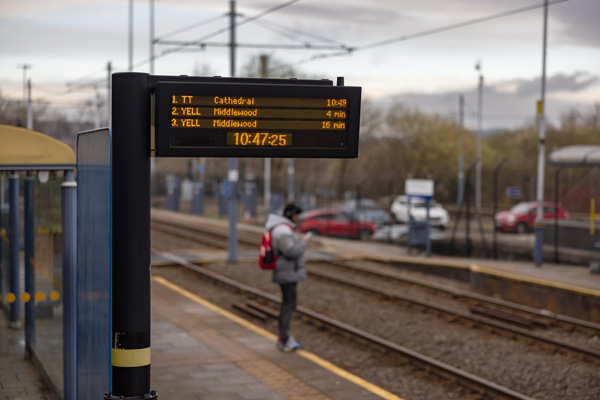
Poster cases display route maps, stop-specific timetables, and service updates. Additional signage and posters may be displayed, so keep a look out for information which advises you of changes to your journey.
Stops have tactile paving to help visually impaired passengers navigate safely. Tram doors will open in-line with this paving.
Step 3
When the tram arrives, please stand back from the platform edge, and allow other passengers to leave the tram first.
If no one is getting off, wait for the door button (in the middle of the doors) to light up and make a sound. Then press the button to open the doors.
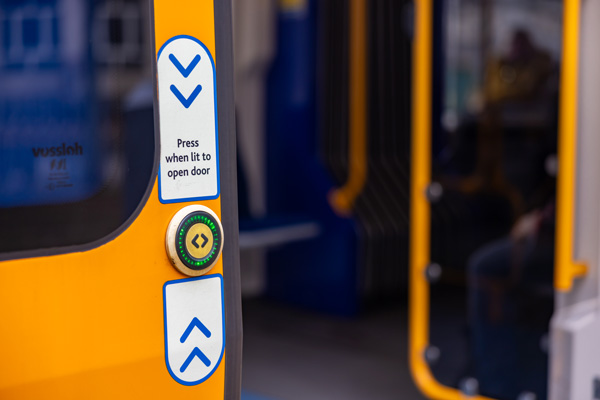
All trams have level boarding with the tram platform.
Step 4
Once you're on-board the tram, find a seat. Priority seats are available near the doors for people with disabilities, older passengers, and those who are pregnant. There are also spaces for wheelchairs and mobility scooters.
If a service is particularly busy you may need to stand. Please stand away from the doors and main walkways to keep the tram safe and accessible for everyone.
A conductor will come to check your ticket, or sell you one if needed. You can pay with cash or contactless card (including Apple Pay and Google Pay).
Step 5
The next stop is shown on screens on-board the tram and announced over the speaker system.
Trams don't stop automatically, you need to request your stop. Press the stop request button on the handrails when your stop is next. 'Stopping' signs will light up once the next stop has been requested.
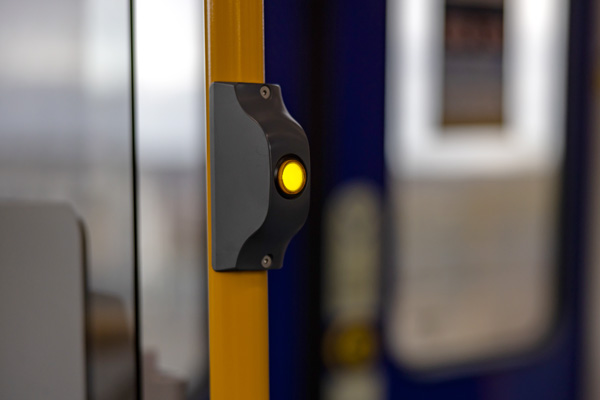
Make your way to the door to exit, making sure to use the handrails. Once the tram stops, you need to press the door open button to exit the tram. Buttons are located at the side of the doors (or on the middle of the door for some newer trams), and will light up and sound a tone once the tram has stopped.
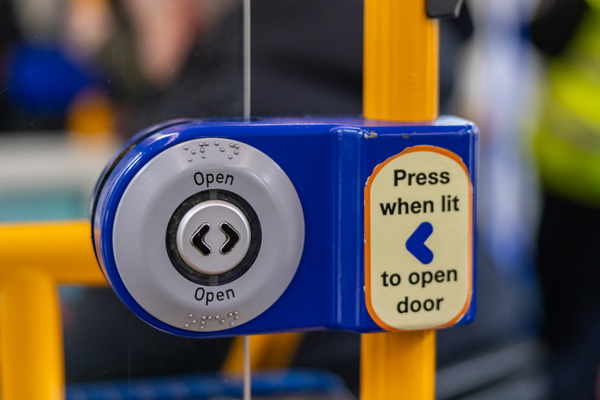
Step 6
After you leave the tram, make sure to follow designated footpaths to cross the tram tracks safely.
Continue to follow the details from your journey plan, or look for nearby signage to popular destinations.
We'd love to hear about your journey - please contact us if you'd like to share your experience.
If you need to contact us about lost property, please use visit our lost property page.
Further information
Page last reviewed: 2 October 2025
